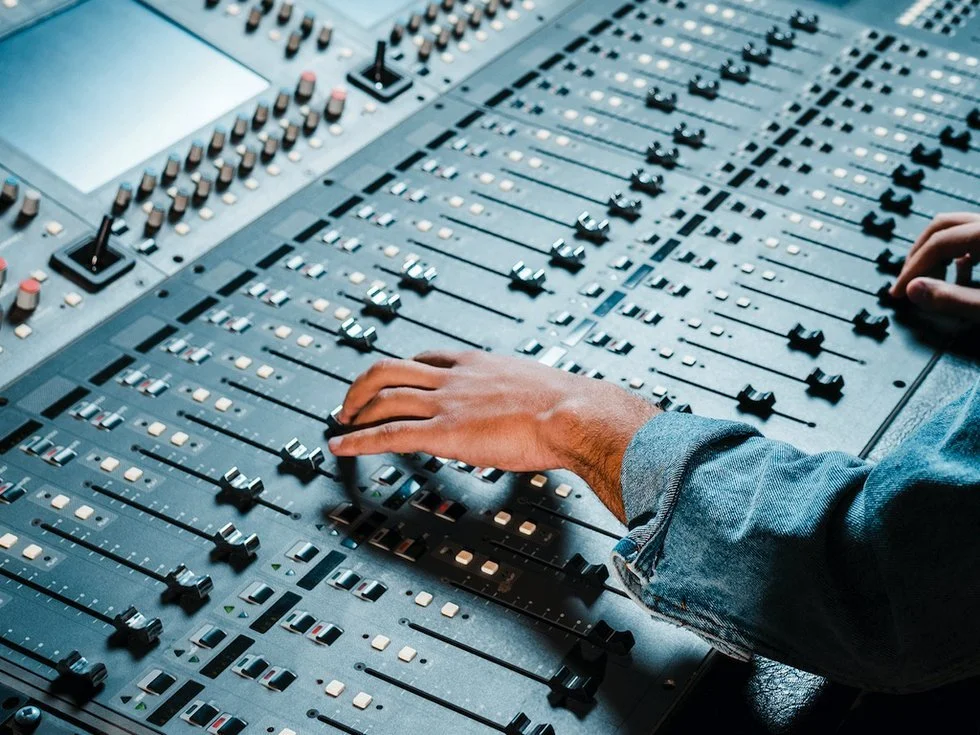How to talk to a sound engineer by Tom Killoran
As a singer you need to know how to communicate with your sound engineer. In this Podcast I talk to Royal Caribbean sound engineer TK (Tom Killoran) on how to get the best sound for your show. We discuss the importance of using a rider, what click tracks are all about, microphone technique and the best way to make your self understood. There's even a section for anyone who wants to get work themselves as a sound engineer on a cruise ship.
Use a rider
If you need anything out of the ordinary send your rider in advance. This helps the sound technician save time at the rehearsal. It's all about being prepared. The aim is to avoid last minute requests, or as TK calls them, “Could I just haves?” which can be difficult to deliver at short notice.
Your rider should detail any specific requirements you have for your show like how many mixes you want in the monitors (one person might just need one mix in two monitors, a four person Motown tribute might need four monitors each with their own mix), where you want the monitors placed, whether you need your show filming and showing on the screens (often used for close up magic on a big stage or for showing the keyboard for a piano act), the type of microphone you'd like (maybe you need more than one) and the type of mic stand (straight or boom, round base or tripod). You should also detail any microphones, wireless packs or musical instruments you're bringing yourself.
Provide a stage layout
A stage plan detailing where you would like the musicians placed, where you'd like the piano and any other bits like stool, music stands, guitar amps, table, water etc.
Some acts like the piano downstage centre, some like the piano lid open high, some require an electric keyboard and so on. All this should be detailed on the stage plan.
Remember the Musical Director will need to have a clear view of all the musicians. Since you might not know which band member will be leading be prepared to be flexible. The band need to be happy and comfortable to give their best for your show. I've made the mistake in the past of insisting on a stage layout that looks great but doesn't work for the band – it didn't end well!
Click tracks
A click track is when the band hear a click or pulse through their headphones which keeps them at the right tempo. Often in the other channel the audience will hear prerecorded instruments like strings or percussion. This combined with the instruments being played live makes a big sound. Often musicians don't like working with clicks but for pieces which are very slow (where the tempo may waver) or where you need a big orchestral sound, they may worth the hassle. If you do use clicks make sure the details are on your rider as this will usually take the engineer some time to set up. Also allow a little extra time for your rehearsal while everyone get their levels right.
Before you start singing
It's good manners to take a few minutes before the rehearsal starts to introduce yourself to the engineer and have a friendly chat about what you're looking for. Treat them with the respect they deserve. Remember, you are a small part of a big production team and it really is a team effort. You need everyone on side to help make you and your show look and sound its best. They are working with you, not for you. Just chatting to the engineer will also give them an idea of how they will mix your voice.
Microphone technique
Generally the guests on cruise ships don't like the music too loud. TK says this can be more an matter of particular frequencies than volume. He can use compression to stop the voice from peaking too loud but it's important for the singer to use good technique and move the microphone away from their mouth slightly on the big notes.
Give them a chance
Once you start your rehearsal it's a good idea to let the engineer have a few minutes to play around before you start telling them what to change. Unless it's really off, let them get the levels where they think it should be before you interrupt.
Making yourself understood
Most of us singers don't know the technical terms to articulate what we're trying to say in the same language a sound engineer might use. Don't worry. It's part of the engineer's job to understand what you're trying to say and give you what you need. TK says it's fine (and normal) to use terms like muddy, thick, bight, empty (when there are some frequencies missing) or full. Even describe how you feel about the sound. They'll know what you mean.
Unless you really know what you're talking about don't start asking the engineer to change specific frequencies, “There's too much 3k” won't really go down well. You just need to tell them the result you want, let them decide how to get there.
Want to be a sound engineer on a cruise ship?
Experience on a cruise ship can be an excellent way of developing your career as a sound engineer. If you fancy working at sea, TK gives some great advice to get you on your way. What kind of experience do you need? How do you apply to work on a ship? How can you climb the ranks and run big production shows? How long are the contracts? What can you expect when you're working on board? Do land based employers value people with cruise ship experience? What kind of equipment will you have to work with? TK answers all these questions and more.
Recorded on board Royal Caribbean's Liberty of the Seas, July 2013

